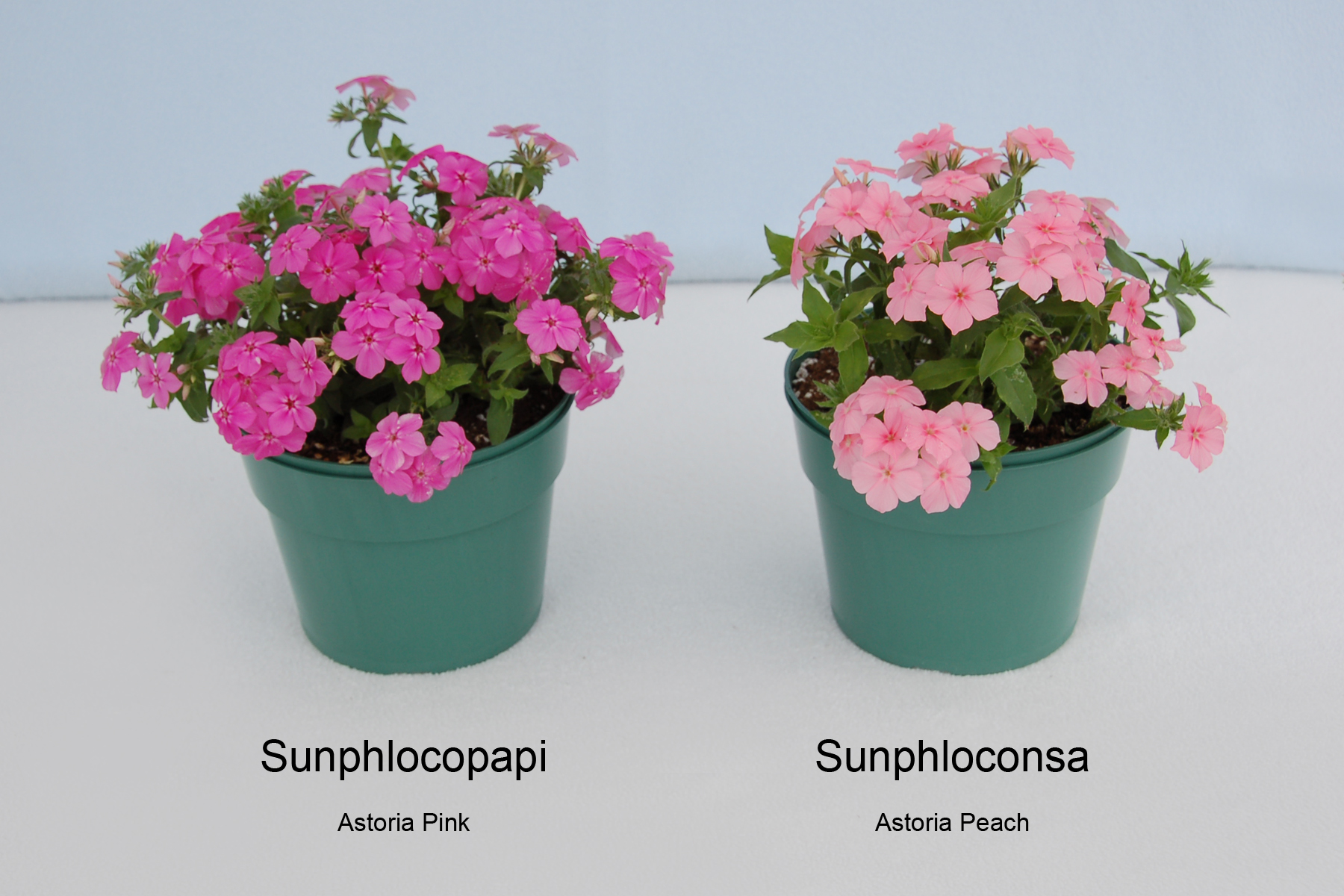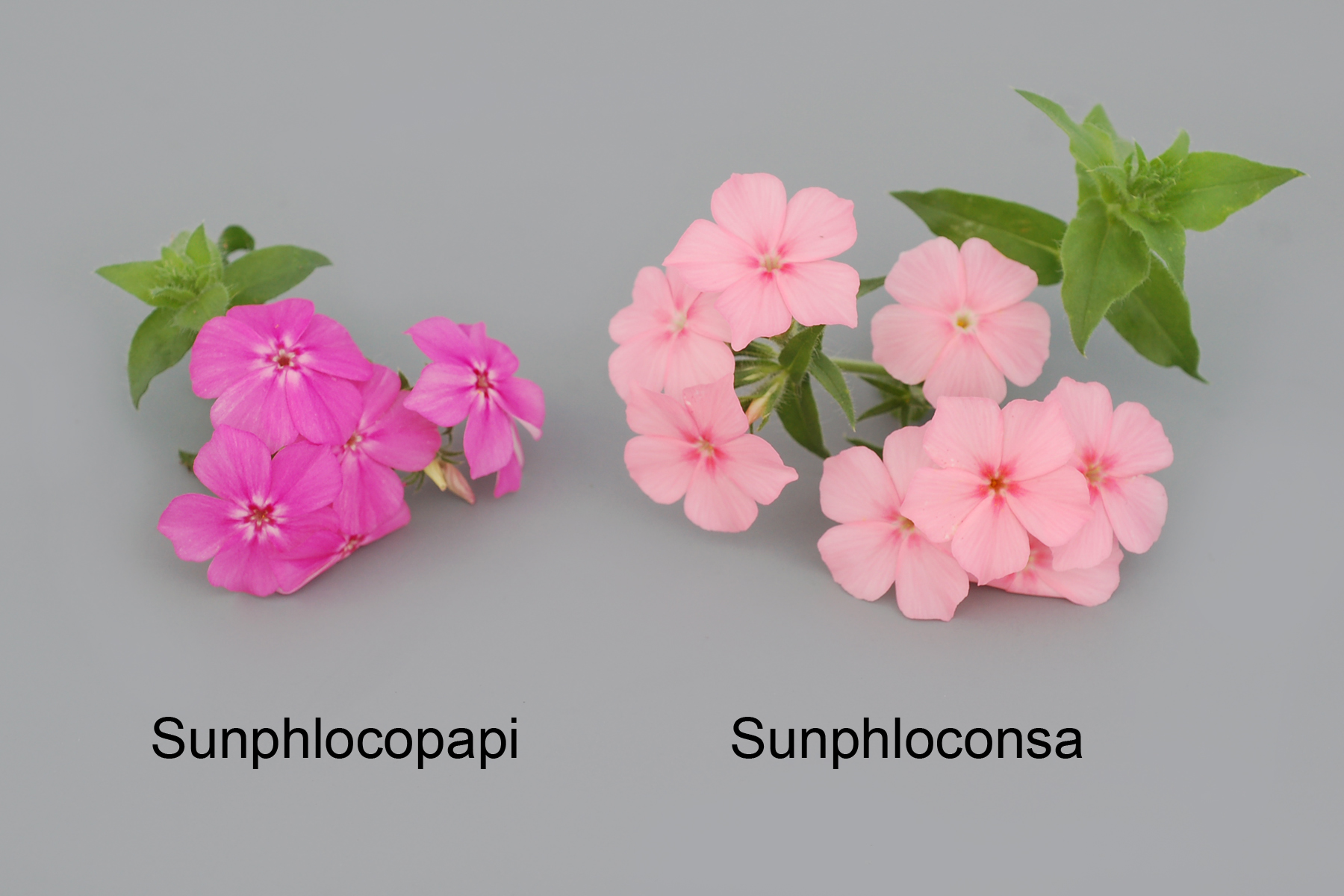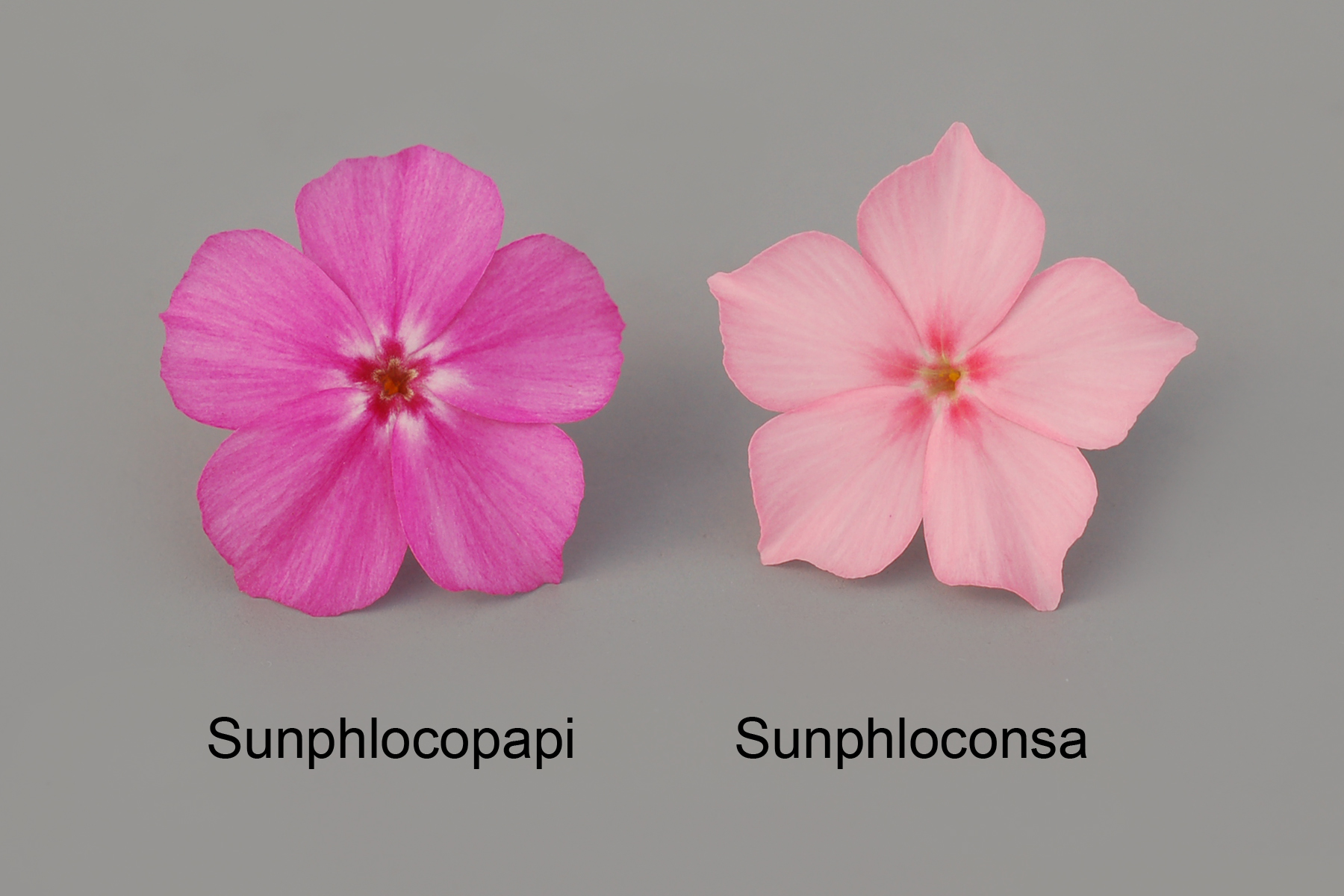Sunphlocopapi
| Denomination: | 'Sunphlocopapi' |
|---|---|
| Trade name: | Astoria Pink |
| Botanical Name: | Phlox drummondii |
| Applicant/Holder: |
Suntory Flowers Limited Administrative Division 4-17-5 Shiba, Minato-ku Tokyo 108-0014 Japan |
| Breeder: |
Kiyoshi Miyazaki, Suntory Flowers Limited, Shiga, Japan |
| Agent in Canada: |
BioFlora Inc. 38723 Fingal Line R.R. #1 St. Thomas, Ontario N5P 3S5 Canada Tel: 519-317-7511 |
| Application Date: | 2010-02-25 |
| Application Number: | 10-6858 |
| Grant of Rights Date: | 2013-11-27 |
| Certificate Number: | 4661 |
| Date rights surrendered: | 2014-11-27 |
Variety Description
Variety used for comparison: 'Sunphloconsa' (Astoria Peach)
Summary: The upper side of the leaf blade of 'Sunphlocopapi' has dense, very long pubescence while the leaf blade of 'Sunphloconsa' has medium pubescence. The upper side of the petal of 'Sunphlocopapi' is purple red to blue pink at the apical zone and blue pink with tones of darker blue pink at the basal zone while the upper side of the petal of 'Sunphloconsa' is red pink. The marking on the upper side of the petal of 'Sunphlocopapi' is purple with a zone of light blue violet while the marking on the petal of 'Sunphloconsa' is red pink. The lower side of the petal of 'Sunphlocopapi' is light blue violet while the lower side of the petal of 'Sunphloconsa' is light blue pink at the apical zone and white at the basal zone.
Description:
PLANT: annual, bushy-rounded growth habit
STEM: no anthocyanin colouration
LEAF BLADE: oblong, no variegation, glandular stickiness present, dense very long pubescence of upper side, medium pubescence of lower side, medium green on upper side
FLOWER: single, domed cyme shape, no anthocyanin colouration in pedicel or calyx, early time of beginning of flowering
COROLLA: star shape, tricolour, pink colour group
PETAL: obovate shape, broad acute apex, weak fringe on petal margin, touching to overlapping margins, eye present
PETAL- UPPER SIDE: purple red to blue pink (RHS N66B-C) at apical zone, blue pink (RHS N66C) with darker blue pink (RHS 67C) tones at basal zone, purple (close to RHS 64A) marking in a star pattern with zone of light blue violet (RHS 76D)
PETAL- LOWER SIDE: light blue violet (RHS 76D) at apical and basal zone.
Origin & Breeding History: The variety 'Sunphlocopapi' originated from a cross conducted from April to August 2004, at Higashiomi-shi, Shiga-ken, Japan. The female parent was a proprietary variety designated '2Ph-26c' and the male parent, was a proprietary variety designated '0Ph-18-M'. Seeds from the above stated pollination were germinated and grown to maturity. In May 2005 one plant was selected by the inventor, propagated by cuttings and grown in a pot trial from April 2006 to October 2007. The botanical characteristics of that plant were then examined. As a result, it was concluded that this phlox plant was distinguishable from any other varieties, and uniform and stable in its characteristics.
Tests & Trials: Trials for 'Sunphlocopapi' were conducted in a polyhouse during the summer of 2012 in St. Thomas, Ontario. Trials included 15 plants each of the candidate and reference varieties. Rooted cuttings were transplanted into 15 cm pots on August 7, 2012. Observations and measurements were taken from 10 plants of each variety on September 28, 2012. All colour determinations were made using the 2007 Royal Horticultural Society (RHS) Colour Chart.
Comparison tables for 'Sunphlocopapi' with reference variety 'Sunphloconsa'
Colour of upper side of petal (RHS)
| 'Sunphlocopapi' | 'Sunphloconsa' | |
|---|---|---|
| apical zone | N66B-C | 48D (more pink than) |
| basal zone | N66C with 67C tones | 48D (more pink than) |
| marking | 64A with 76D zone | 52B-C |
Colour of lower side of petal (RHS)
| 'Sunphlocopapi' | 'Sunphloconsa' | |
|---|---|---|
| apical zone | 76D | 56D |
| basal zone | 76D | NN155B |
Click on image for larger view

Phlox: 'Sunphlocopapi' (left) with reference variety 'Sunphloconsa' (right)
Click on image for larger view

Phlox: 'Sunphlocopapi' (left) with reference variety 'Sunphloconsa' (right)
Click on image for larger view

Phlox: 'Sunphlocopapi' (left) with reference variety 'Sunphloconsa' (right)
- Date modified: